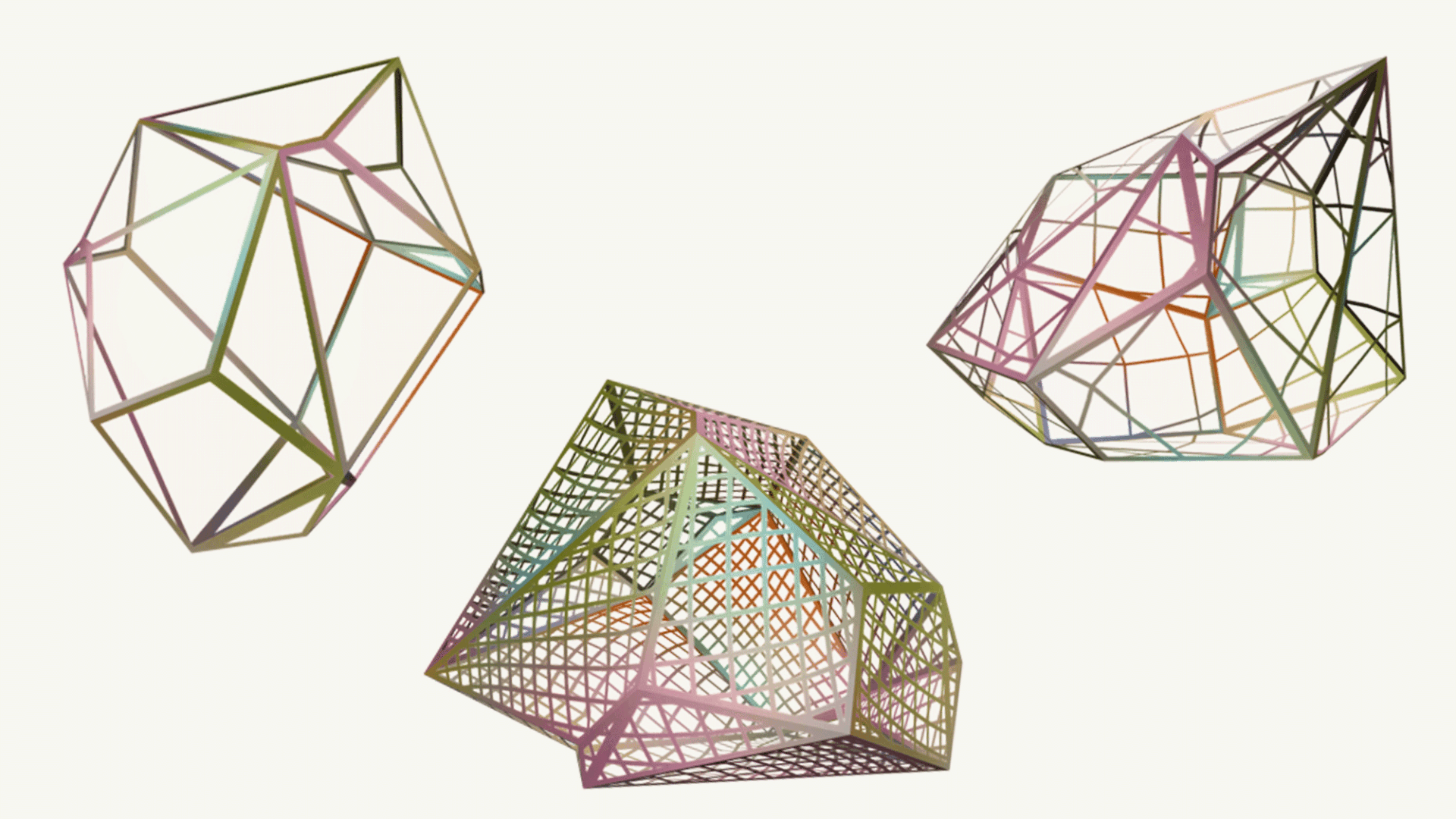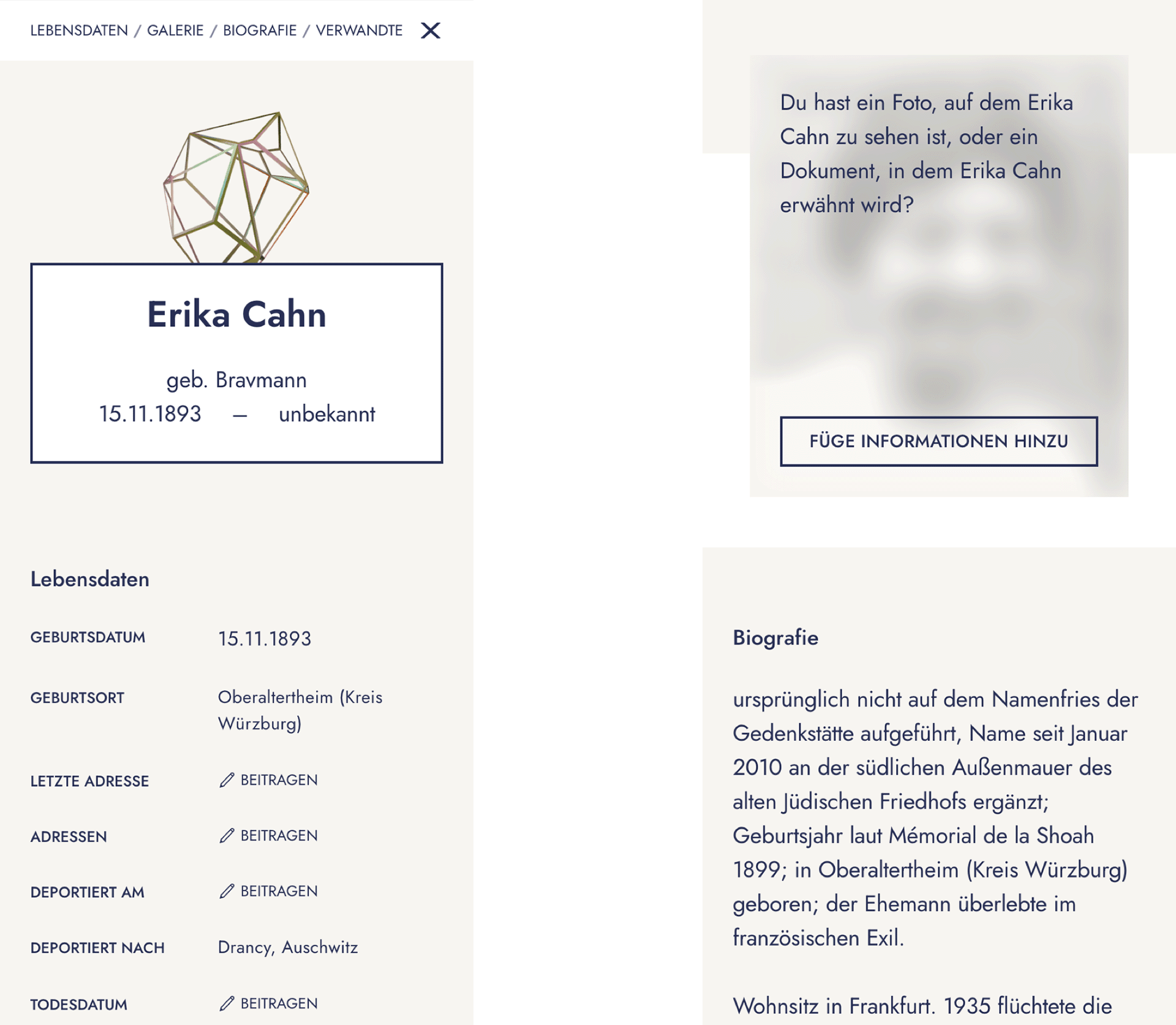
Research and memory platform
Digital culture of remembrance
The "Shoah Memorial Frankfurt" makes the biographies of more than 12,000 Jews digitally accessible - people who lived in Frankfurt, were disenfranchised, persecuted, deported and murdered or driven to suicide in the years 1933 and 1945.
»
The "Shoah Memorial Frankfurt" makes the personal history of those murdered visible and dedicates a grave to them in digital space. Students, historians and family members can strengthen the memory of the individuals by adding information or photos about their biographies.
Women, men and children
The "Shoah Memorial Frankfurt" contains more than 12,000 names, biographical data and short biographies of Jewish women, men and children who lived in Frankfurt and died violently during the National Socialist regime. Whereas descendants and relatives, historians and schoolchildren previously had to contact the Jewish Museum to find out more about the murdered, they can now do their own research.

Biography access
The platform commemorates the fates of the murdered. It refers to the Neuer Börneplatz memorial and the Jewish tradition of leaving a stone on the graves of the dead. On site, more than 11,000 name blocks are affixed to the wall of the Old Jewish Cemetery. From a distance, they show a pattern that suggests the extent of the extermination. As one approaches, the names, birthdays, dates of death, and places of death of the deportees become legible.
We have retained this principle of distance and proximity. The presentation is limited to names and "stones", more than 12,000 of them can be viewed in different zoom levels. They can be filtered and lead to the biographical data of the murdered people. All data originate from a research project conducted by the Jewish Museum Frankfurt between 1996 and 2005. The results of this research were recorded in a non-publicly accessible database and reviewed and supplemented for the launch of the digital memorial using more recent sources. This review will continue after the launch of the platform and is expected to be completed by the end of 2023. Users are invited to contribute to the expansion of the biographies with additional information and images and thus strengthen the memory of those murdered.
Technically, the application is based on React and Next.js. The challenge lay in the display and behavior of the many bricks. Both should work smoothly even on weaker devices and adhere to certain accessibility standards. After testing with a first prototype, we decided to use WebGL using Three.js.
The memorial is accessible at www.shoah-memorial-frankfurt.de.
- 2 Images
Educational agenda NS injustice
The "Shoah Memorial Frankfurt" is one of three digital projects that were implemented in cooperation with the Institute of City History and the Historical Museum Frankfurt as part of the nationwide "Educational Agenda on National Socialist Injustice" with third-party funding from the Foundation Remembrance, Responsibility, Future
More cases:
